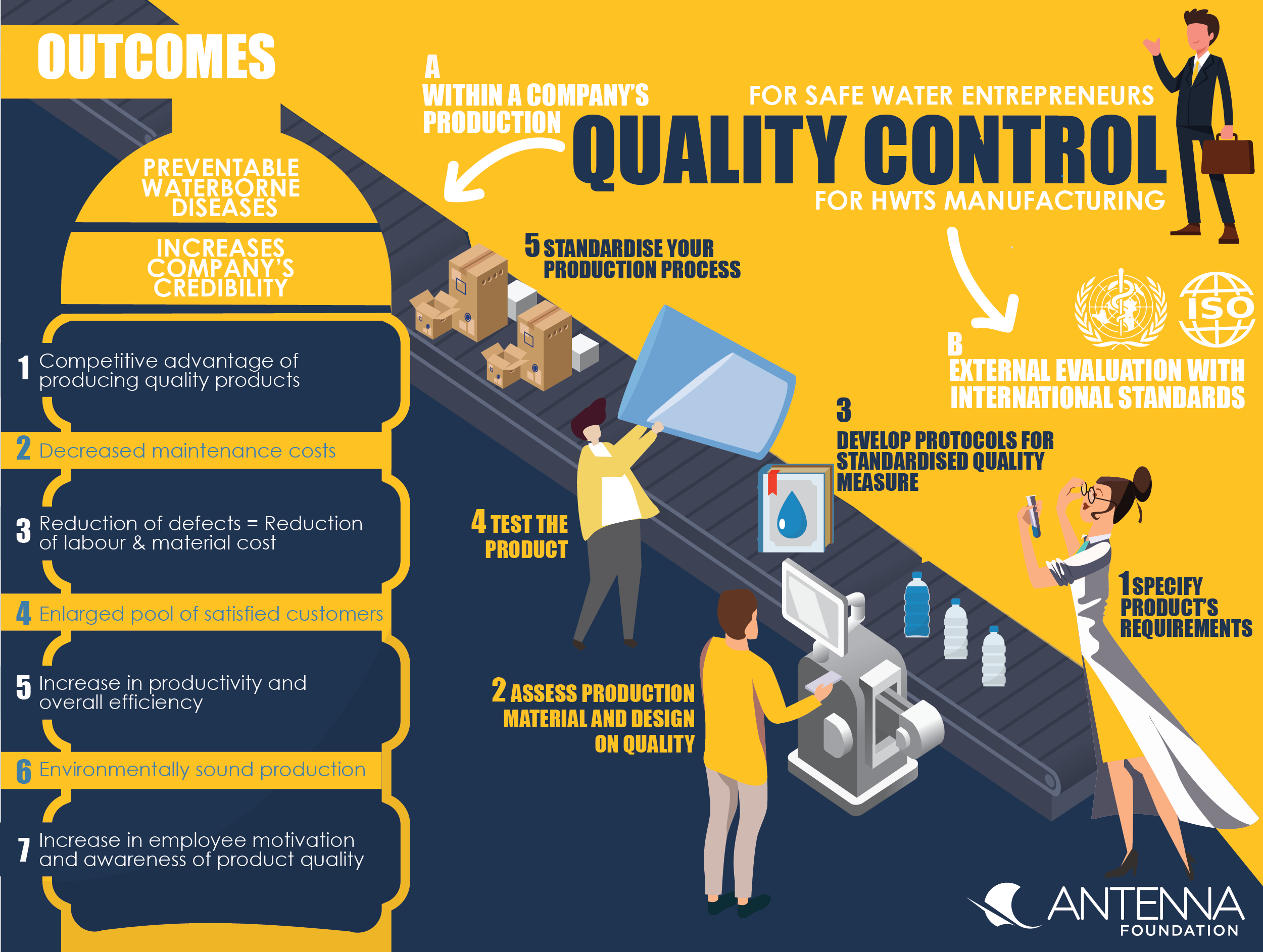Executive Summary

The following (inconclusive) checklist questions support you in identifying a proper location for the production of HWTS. See also the Buiness location checklist (excel sheet) that will guide you through this process.
Questions regarding the location itself
When deciding on the right location, keep in mind the following questions:
- Should the headquarters and production site be in the same location?
- Consider that a consistent communication flow between the different people/departments of a company is important. If the headquarter is located in a commercial district, it might not be feasible to have a production site close by.
- What sort of skilled/unskilled labour is needed to start the company? Is there skilled labour available in the region? What’s the level of the salaries?
- Is the location close to your suppliers? And can the supplies be transported to and from your location without high costs?
- Are there advantageous tax schemes in place? (Information can be accessed by local governments and chambers of commerce)
- Are there places for business meetings available?
- Are there restaurants nearby (in order to invite business partners)?
- Consider availability of resources and further infrastructure: water, electricity, and sewage system, access to telecommunication, health facilities etc. What are the costs of getting access to it? If there are restrictions, how could the plans be adapted and what are respective implications?
Questions regarding property conditions / requisites
- What soil is on site? Does it have specific implication for the factory and the set-up costs?
- How much space is needed to set up the production process?
- What room sizes are needed?
- Would there be sufficient space for on-site expansion?
- Is a storage room needed?
- Should there be meeting rooms?
- Is the production polluting air and/or making noise? How should be dealt with these issues?
- Is ventilation/a heating system or air conditioning needed?
- How will you assure safe water and sanitation for your staff?
- Where will your employees eat or have a break?
Note:
a) In some countries it is really difficult to receive a construction permit within an appropriate period of time, find information how to deal with this issues here.
b) Depending on a company’s planning and financial ability it has to be decided to either set-up a new factory, buy an existing factory building or to look for a property to rent. Sometimes it is cheaper in the mid-term to rent equipment and space to have a less capital intense venture (SRINIVASAN, 2014) (see tool on financial analysis).
Subscribe here to the new Sanitation and Water Entrepreneurship Pact (SWEP) newsletter. SWEP is a network of organizations joining hands to help entrepreneurs design and develop lasting water and sanitation businesses.
7 Tips for a Smooth Start to Manufacturing
Business Location Checklist
Facilities Checklist
On Decoupling Points and Decoupling Zones
This paper outlines a framework for production and storage management based on content, represented by four key decision categories, and an overview of a process for applying the content.
Published by Taylor & Francis under License: CC BY 3.0 IGO.
WIKNER, J. (2014): On Decoupling Points and Decoupling Zones. In: Production & Manufacturing Research: Volume 2 , 167–215. . URL [Accessed: 23.07.2018] PDF

